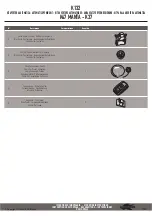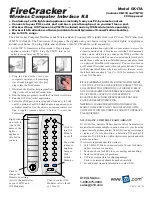
Joule 3.0 User Guide page 33
Chapter 4: Reports Mode
Report Definitions
Work Report and Peak Power Report
KJ
1. 1000 Joules. 2. A unit of energy equal to the work done by a force of 1000 newtons acting through a distance
of 1 meter. 3. A measure of mechanical energy or the energy released when a force is applied to an object or
body. 4. A common unit used to express the total volume or work accomplished during a given workout, ride, or
exercise bout. 5. A unit or measure used to express the total training load. 6. The average power output in watts
multiplied by the time in seconds divided by 1000
KJ/HR
Average Kj’s per hour of riding during a ride
TSS
Training Stress Score estimating the total amount of glycogen burned on a ride.
IF
Ratio of the normalized power to threshold power. Joule uses the mid-point between the threshold zone (zone
3) and the race pace zone (zone 4) as the threshold power value.
Peak Power
The highest average power output that can be held for a given duration. 2. For most individuals a peak sustain-
able power or peak power output lasting 4 to 8 minutes is equivalent to an intensity that elicits their VO2 max,
or maximal capacity to consume oxygen. 3. For most individuals a peak sustainable power output lasting 20 to
40 minutes is equivalent to an intensity that elicits their lactate threshold or a value of blood lactate 2 to3 mM
above their baseline blood lactate. 4. For most individuals a peak sustainable power output lasting 40 minutes
to 2 hours is equivalent to an intensity that elicits their lactate threshold, or a value of blood lactate just above
to 1 mM above their baseline blood lactate. 5. In cycling, the peak sustainable power for any given duration
is analogous to their best performance for a given time. For example, a runner might have a personal best of
5 minutes in a mile run and 35 minutes in a 10 km run, whereas a cyclist might have a personal best or peak
sustainable power of 400 watts for 5 minutes and 340 watts for 35 minutes.
















































